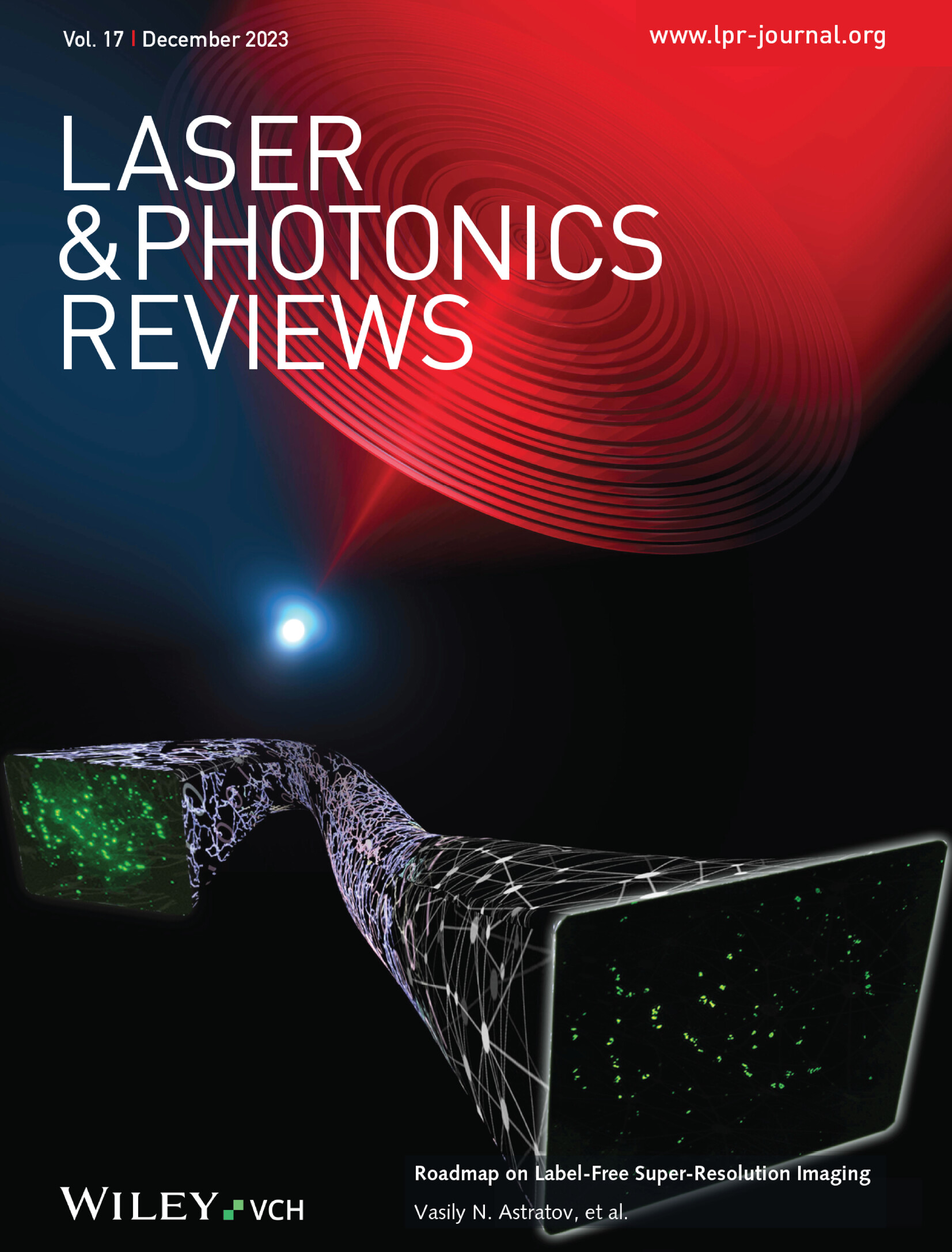Sb3+/Mn2+ Co掺杂Cs3Cd2Cl7的光致发光与持续发光的不一致性
IF 10
1区 物理与天体物理
Q1 OPTICS
引用次数: 0
摘要
持续发光(PersL)材料在紧急标识、防伪和生物成像等应用中引起了极大的关注。然而,大多数无机PersL材料表现出相同的光致发光(PL)和PersL光谱。虽然有机材料可以实现PL - PersL不一致,但其短暂的PersL时间严重限制了实际应用。研究表明,Cs3Cd2Cl7:1%Sb3+,1%Mn2+发出青色PL和橙色PersL, PersL时间超过3600 s。PL和PersL之间的差异可归因于它们不同的发光途径。对于PL,主要途径包括从Sb3+的激发态到自捕获态的电子弛缓,然后是辐射跃迁到基态。相比之下,PersL主要涉及从陷阱释放的电子迁移到传导带,然后迁移到Cl−‐Mn2+电荷转移带,在那里它们被转移到Mn2+的4T1能级,然后辐射跃迁回6A1能级。最后,基于Cs3Cd2Cl7:Sb3+,Mn2+独特的PL - PersL不一致特性,研究了其在动态防伪和多维信息加密中的应用。这项工作为开发具有PL - PersL不一致性的超长PersL材料提供了一种新的策略。本文章由计算机程序翻译,如有差异,请以英文原文为准。
Inconsistency Between Photoluminescence and Persistent Luminescence in Sb3+/Mn2+ Co‐Doped Cs3Cd2Cl7
Persistent luminescence (PersL) materials have garnered significant attention in applications such as emergency signage, anti‐counterfeiting, and bioimaging. However, most inorganic PersL materials exhibit identical photoluminescence (PL) and PersL spectra. While organic materials can achieve PL‐PersL inconsistency, their short‐lived PersL times severely restrict practical implementation. This study reveals that Cs3 Cd2 Cl7 :1%Sb3+ ,1%Mn2+ emits cyan PL and orange PersL, featuring a PersL time surpassing 3600 s. The discrepancy between the PL and PersL can be attributed to their different luminescent pathways. For PL, the primary pathway involves electronic relaxation from the excited state of Sb3+ to self‐trapped state, followed by radiative transition to the ground state. In contrast, PersL mainly involves the electrons released from traps migration to the conduction band, then to the Cl− ‐Mn2+ charge transfer band, where they are transferred to the 4 T1 energy level of Mn2+ , followed by a radiative transition back to the 6 A1 energy level. Finally, based on the unique PL‐PersL inconsistency characteristic of Cs3 Cd2 Cl7 :Sb3+ ,Mn2+ , this study demonstrates its application in dynamic anti‐counterfeiting and multi‐dimensional information encryption. This work provides a new strategy for developing ultra‐long PersL materials with PL‐PersL inconsistency.
求助全文
通过发布文献求助,成功后即可免费获取论文全文。
去求助
来源期刊
CiteScore
14.20
自引率
5.50%
发文量
314
审稿时长
2 months
期刊介绍:
Laser & Photonics Reviews is a reputable journal that publishes high-quality Reviews, original Research Articles, and Perspectives in the field of photonics and optics. It covers both theoretical and experimental aspects, including recent groundbreaking research, specific advancements, and innovative applications.
As evidence of its impact and recognition, Laser & Photonics Reviews boasts a remarkable 2022 Impact Factor of 11.0, according to the Journal Citation Reports from Clarivate Analytics (2023). Moreover, it holds impressive rankings in the InCites Journal Citation Reports: in 2021, it was ranked 6th out of 101 in the field of Optics, 15th out of 161 in Applied Physics, and 12th out of 69 in Condensed Matter Physics.
The journal uses the ISSN numbers 1863-8880 for print and 1863-8899 for online publications.

 求助内容:
求助内容: 应助结果提醒方式:
应助结果提醒方式:


